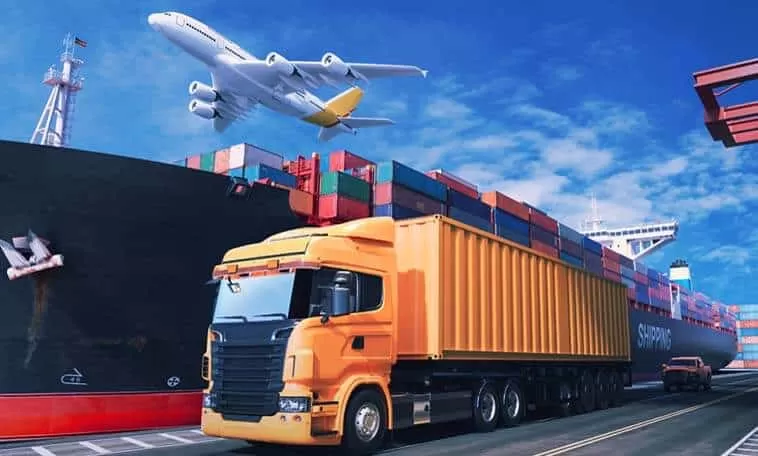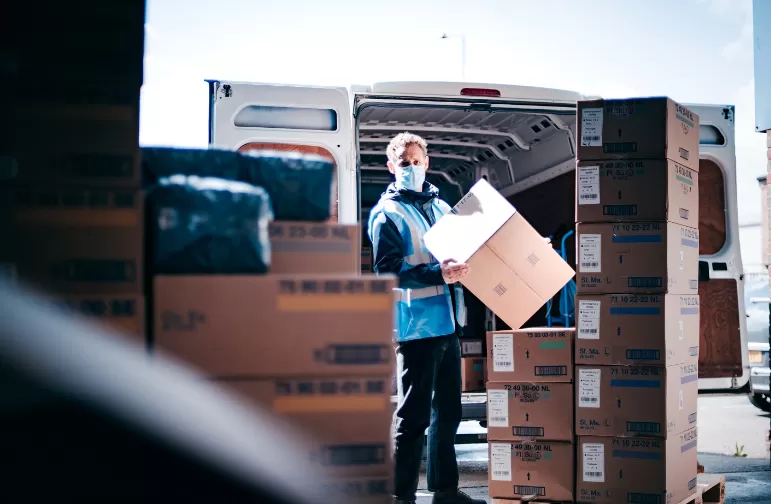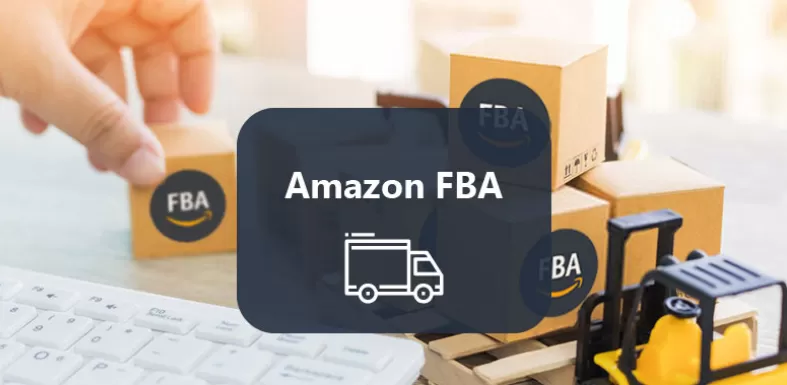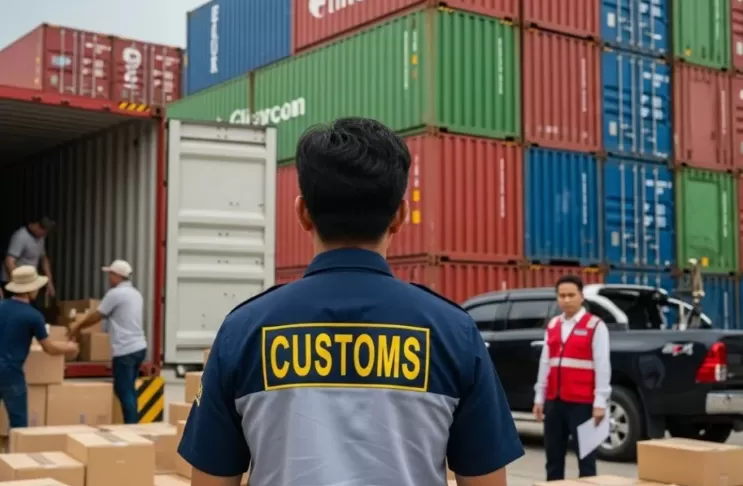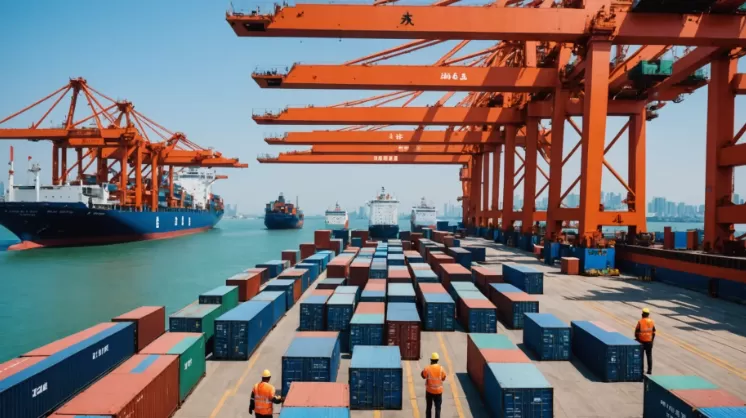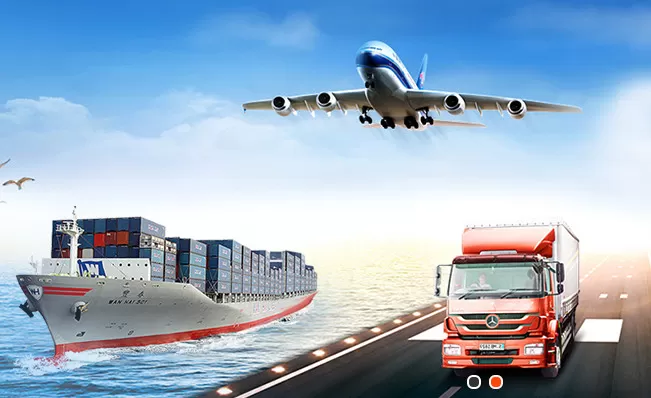Shipping from China to Berlin isn't just a logistics task—it's the vital link in your supply chain that connects you to one of Europe's most dynamic markets. Whether you're an Amazon FBA seller, an established importer, or a growing e-commerce brand, navigating this route effectively is key to your profitability and customer satisfaction.
This guide is designed to be your most trusted resource. We'll move beyond generic advice and dive into the specific costs, timelines, and strategic choices you'll face, empowering you to make confident, informed decisions for your business.
Are you ready?
Get real-time quotes for Berlin
Get Quotes
First, Get Oriented: Your Core Options at a Glance
Before we dive into the details, here’s a high-level overview. This table is your quick-reference guide to the fundamental trade-offs.
| Method |
Best For |
Estimated Transit Time (Door-to-Door) |
Key Advantage |
| Express (DHL/UPS) |
Samples, urgent docs, < 100kg parcels |
3-7 Days |
Door-to-door simplicity & speed |
| Air Freight |
100kg+ urgent cargo, high-value goods |
5-10 Days |
Best speed for palletized goods |
| Sea Freight (LCL) |
1m³+ volume, not time-sensitive |
35-50 Days |
Maximum cost-efficiency for large volumes |
| Sea Freight (FCL) |
Full container loads |
30-45 Days |
Cost control & container exclusivity |
| Rail Freight |
Heavy goods balancing cost & time |
18-25 Days |
Excellent middle-ground option |
Note: Times are typical and can vary based on season, origin, and customs. Door-to-door includes customs clearance.
Here’s the thing: Your final choice won't be based on cost or speed alone. It's about finding the optimal balance for your specific product, budget, and timeline.
A Deep Dive into Your Shipping Method Options
Let's break down each option so you can see exactly where your business fits in.
Air Freight: When Speed is Your Priority
Air freight is your strategic tool for urgent restocks, high-value items, and perishable goods.
The Real Cost Breakdown (with sample weights):
+100 kg: You've entered true air freight territory. Rates are calculated per kilogram, and this volume becomes significantly more cost-effective than express couriers. You'll typically see prices ranging from €3.50 - €6.00 per kilogram for door-to-door service.
+200 kg: At this point, you gain real negotiating power. Airlines offer better rates, and the cost-per-kg can drop to €2.50 - €4.50 per kg. This is often the sweet spot for businesses that need regular, rapid replenishment.
The Process: It’s typically handled as Airport-to-Airport (ATA), but most businesses opt for a Door-to-Door service through their freight forwarder for a seamless experience.
Sea Freight: The Backbone of Global Trade to Berlin
This is where most of your budget will go for non-urgent, large shipments. You have two main paths.
Sea Freight LCL (Less than Container Load): The Smart Start for SMEs
If you don't need a full container, you share space with other importers. You pay for the volume you use.
Volume-Based Analysis:
1 CBM: The common starting point. Be aware of minimum charges (often for 1 CBM). Perfect for testing new products or small batches. Cost: €90 - €180 per CBM.
5 CBM: You're now seeing better economies of scale. The cost per CBM is lower than at 1 CBM.
10 CBM & Above: You're approaching a critical decision point. Once you hit 12-15 CBM, it's time to get a quote for a 20' container. Sometimes, the cost, speed, and simplicity of FCL make more sense.
Sea Freight FCL (Full Container Load): For Maximum Control and Value
When your volume justifies it, FCL is the gold standard for cost efficiency and security.
Container Cheat Sheet:
20' Container (20'GP): The workhorse. Ideal for dense, heavy goods. Holds ~28 CBM. Cost: €2,800 - €4,500 (door-to-door).
40' Container (40'GP): For larger volumes of standard goods. Holds ~58 CBM.
40' High Cube (40'HC): The most common choice for general cargo and e-commerce. The extra height (~68 CBM) is perfect for lightweight, bulky items. Cost: €3,800 - €6,200 (door-to-door).
45' High Cube (45'HC): The maximum size. Use this when you've maxed out a 40'HC. Offers ~78 CBM.
International Express: The 10kg to 120kg Question
10 kg: This is the domain of DHL, UPS, and FedEx. It's simple, fast, and door-to-door.
120 kg: Now you're in a grey area. While you can ship this via express, the cost will be high. This is the exact weight where you must request an air freight quote. You will almost always save a significant amount.
Shipping Cost Reference Table: China to Berlin
A Quick Note on Pricing: The figures below are estimated door-to-door ranges for standard goods, excluding peak season surcharges. Your final cost will vary based on your cargo's exact weight, dimensions, and specific requirements. Use this table as a benchmarking tool to set expectations and compare methods at a glance.
| Shipping Method |
Typical Cargo Volume |
Estimated Cost (Door-to-Door) |
Key Cost Drivers & Notes |
| International Express |
10 kg Parcel |
€120 - €250 |
Price is all-inclusive. Most economical for small, urgent packages. |
| Air Freight |
100 kg |
€400 - €700 |
Charged per kg. Becomes more cost-effective than express for 150kg+. |
| Air Freight |
500 kg |
€1,500 - €2,800 |
Charged per kg. Rates drop significantly at this volume. Ideal for urgent restocks. |
| Sea Freight (LCL) |
1 CBM |
€90 - €180 |
Charged per CBM. Minimum charges often apply (e.g., for 1 CBM). Best for SMEs. |
| Sea Freight (LCL) |
5 CBM |
€450 - €800 |
Charged per CBM. Better cost per CBM than smaller volumes. |
| Sea Freight (FCL) |
20' Container (28 CBM) |
€2,800 - €4,500 |
Fixed price per container. Most cost-effective for full loads. Offers exclusivity. |
| Sea Freight (FCL) |
40' High Cube (68 CBM) |
€3,800 - €6,200 |
Fixed price per container. Best value for voluminous, low-weight goods. |
| Rail Freight |
1 CBM (in shared wagon) |
€110 - €200 |
Balanced option. Faster than sea, cheaper than air for heavy goods. |
What Impacts These Costs? Several key factors can push your price toward the higher or lower end of these ranges:
Fuel Surcharges (BAF for sea/FAF for air): Fluctuate with global oil prices.
Currency Exchange Rates: Especially between USD/EUR, as ocean freight is priced in USD.
Your Product Type: Standard goods are cheapest. Special handling (e.g., for fragile, hazardous, or temperature-sensitive items) adds cost.
Customs Clearance Complexity: Simple, fully declared shipments clear fastest and cheapest. Incorrect paperwork leads to inspections and storage fees.
Final Delivery in Berlin: A business address with a loading dock is cheaper to deliver to than a residential address without one.
Get Your Personalized, All-Inclusive Quote
While the table above gives you a solid starting point, an accurate price can only come from understanding your specific shipment.
Click the button below to get a detailed, no-obligation quote in less than 24 hours. We'll provide a transparent breakdown of all costs—from ocean freight to final delivery at your Berlin address—so you can budget with confidence.
[Button: Get Your Free Custom Quote Now]
The Final Leg: Demystifying Logistics Models for Berlin Delivery
The journey doesn't end at the German port. How your goods get to your Berlin door is critical.
Door-to-Door (DDP): Your freight forwarder handles everything from the seller's warehouse in China to your receiving door in Berlin, including all duties and taxes. This is the easiest, most hands-off approach and highly recommended for most importers.
Port-to-Port: You are only paying for the ocean voyage. You handle customs clearance, trucking to Berlin, etc. This is for experienced importers only.
(Sea Pick): This is a game-changer for e-commerce. Your goods ship via sea, but upon arrival and clearance, the final delivery is by a parcel carrier like DPD or Hermes. It's fast and perfect for getting palletized goods into Amazon FBA or other warehouses quickly.
(Sea Card): Similar to Sea Pick, but the final delivery is by a dedicated truck. This is almost always cheaper than Sea Pick for full truckloads or very heavy pallets. The trade-off? Delivery might be slightly slower and may require a loading dock.
Decision Guide: Sea Pick or Sea Card for Berlin?
Is your cargo under 500 kg and palletized for quick handling? -> Sea Pick.
Is your cargo over 500 kg, or is it a full container? -> Sea Card.
Is your final destination an Amazon FBA warehouse with strict appointment times? -> Sea Pick is often more reliable for tight scheduling.
The Amazon FBA Seller's Playbook for Berlin
Shipping to Amazon FBA requires a specific strategy. Here’s your dedicated plan.
The Golden Rule: Your shipment must be FBA-ready—perfect labeling, palletization, and shipment planning in Seller Central.
Your Three Primary Shipping Solutions:
For Emergency Restock: Air Freight + Express Delivery. It's expensive, but it will save you from a stockout.
For Balanced, Regular Shipments: Sea Pick (LCL or FCL). This is the industry standard for balancing cost with the speed Amazon demands.
For Heavy/Bulky Products & Large Volume: Sea Card (FCL). This will dramatically reduce your final delivery cost for heavy goods.
Pro Tip for FBA Newcomers: Start with Sea LCL via Sea Pick. It minimizes upfront investment and risk. As your sales volume grows, graduate to FCL shipments for better margins.
The Nitty-Gritty: Costs, Customs, and Avoiding Delays
This is where you save real money and avoid costly headaches.
Understanding the Real Cost Components:
Your quote is a sum of parts:
Ocean/Air Freight Charge
Fuel Surcharge
Origin & Destination Port Charges
Inland Trucking to Berlin
Customs Clearance Fees
Duties & Taxes (VAT)
Cargo Insurance
Clearing Customs in Germany: The Essentials
You (or your agent) will need:
Commercial Invoice
Packing List
Bill of Lading/Air Waybill
Certificate of Origin (if applicable)
Using a DDP (Delivered Duty Paid) service is highly recommended. Your forwarder calculates and pays all duties and taxes for a seamless process.
Why Are My Goods Delayed? Common Causes & Solutions
Delays happen, but you can mitigate them.
Peak Season (Q4): Congestion leads to longer port waits. Solution: Ship early.
Customs Inspections: Incomplete paperwork is a major trigger. Solution: Ensure all documents are 100% accurate.
Weather & Labor Issues: Typhoons or strikes can halt operations. Solution: Work with a forwarder who provides proactive updates and alternative routes.
Shipping Line Schedules: Vessels may change routes, causing "rollovers." Solution: Build a 1-2 week buffer into your inventory planning.
Advanced Cost and Time Optimization Strategies
Here's the thing: most businesses focus on negotiating freight rates, but the real savings often come from smarter operational decisions. Let me share some advanced strategies that our most successful clients use to optimize their China-to-Berlin supply chain.
1. Smart Cargo Consolidation: Think Beyond Simple Shipments
Don't just ship what you have when you have it. The real savings come from strategic planning.
Regional Consolidation Warehouses: Instead of shipping directly from multiple factories, use consolidation hubs in key regions like the Pearl River Delta or Yangtze River Delta. We've seen clients reduce their shipping costs by 15-25% simply by combining shipments from different suppliers in one location before the main voyage.
LCL Optimization: When using LCL shipping, timing is everything. Work with your forwarder to identify the most cost-effective consolidation schedules. Sometimes waiting an extra 3-5 days to catch a more optimal consolidation can save you 20% on ocean freight.
Seasonal Planning: Here's a pro tip: schedule your bulk shipments during the industry's slow seasons (typically January-March). You'll not only get better rates but also faster transit times because there's less port congestion.
Amazon FBA
Get real-time quotes for Berlin
Get Quotes
2. Packaging and Loading Optimization: The Hidden Goldmine
Most businesses completely overlook this area, but it's where we consistently find the biggest quick wins.
Custom Packaging Design: We helped a furniture client redesign their packaging to be 30% more compact without compromising protection. This reduced their container usage by one full container every four shipments. That's real money.
Standardized Pallets: Use EU-standard pallets (800×1200mm) from the start. Non-standard pallets often lead to repacking fees and handling delays at European distribution centers.
Load Planning Software: This isn't just for massive corporations anymore. Simple, affordable load optimization tools can help you maximize container space utilization. One of our e-commerce clients increased their per-container capacity by 18% using basic planning software.
3. Transportation Mode Mix: Getting Creative with Combinations
Sometimes the best solution isn't a single method, but a smart combination.
Sea-Air Combinations: For time-sensitive goods that can't justify pure air freight, consider shipping to Dubai or another hub by sea, then flying to Berlin. This can cut costs by 40-50% compared to direct air while being 50% faster than all-ocean.
Rail-Sea Hybrids: For inland Chinese origins, rail to a European hub like Hamburg followed by trucking to Berlin can be both faster and cheaper than all-ocean from Chinese coastal ports.
4. Documentation and Process Optimization: Avoiding Costly Delays
I can't stress this enough: paperwork problems cause more delays than weather and port congestion combined.
Digital Document Management: Implement a cloud-based system where all stakeholders (supplier, forwarder, customs broker) can access and update documents in real-time. This alone can cut customs clearance time by 3-5 days.
Pre-Clearance Preparation: Start your customs documentation process while goods are still in transit. Many don't realize you can submit most import documents days before the vessel arrives.
5. Supply Chain Collaboration: Working Smarter with Partners
Your relationships with suppliers and logistics partners matter more than you might think.
Supplier Packaging Standards: Implement clear packaging guidelines with your Chinese suppliers. One client standardized carton sizes across all suppliers and reduced their LCL costs by 22% through better space utilization.
Performance Metrics: Track your logistics partners on more than just price. Measure their documentation accuracy, booking reliability, and communication responsiveness. The cheapest option often becomes expensive when it causes delays.
6. Duty and Tax Optimization: Legal Ways to Reduce Costs
Many businesses pay more in duties than they need to because they don't invest time in understanding the rules.
HS Code Accuracy: Work with a customs expert to ensure your products are classified correctly. We recently helped a client save 7% in duties simply by correcting their HS code classification.
Trade Agreement Utilization: Make sure you're taking full advantage of EU-China trade agreements. Proper certificates of origin can reduce or eliminate duties entirely for eligible products.
VAT Planning: If you're importing regularly, consider VAT deferment schemes and ensure you're reclaiming VAT efficiently. The cash flow benefits alone can be significant.
The bottom line: True logistics optimization isn't about finding the cheapest rate—it's about building a smarter, more efficient supply chain that aligns with your business goals. Start with one or two of these strategies that fit your operation, and you'll be surprised how quickly the savings add up.
Remember, the goal isn't just to ship cheaper—it's to build a competitive advantage through superior supply chain management.
How to Choose Between Fastest & Cheapest Shipping Methods to Berlin
Here's a reality in logistics: you're always balancing speed against cost. The "best" option doesn't exist in a vacuum—it depends entirely on your specific business needs.
Let me break down a practical framework we use with our clients to make this decision straightforward.
The Decision Matrix: Matching Your Needs to the Right Method
For the ABSOLUTE FASTEST Method:
Under 100kg: International Express (DHL, UPS, FedEx)
Over 100kg: Air Freight
Here's the thing: Air is always your fastest option for commercial quantities. There are no hidden shortcuts here.
For the ABSOLUTE CHEAPEST Method:
Under 2 CBM: Sea Freight LCL
Over 15 CBM: Sea Freight FCL
The reality check: Sea freight will always be your most cost-effective option for non-urgent shipments. The larger your volume, the better your cost per unit becomes.
The Smart Middle Ground: Where Most Businesses Actually Operate
This is where the real strategy comes in. You're not always choosing between "fastest" and "cheapest"—you're looking for the optimal balance.
Use this simple flowchart in your decision process:
"Is my shipment under 150kg and extremely urgent?"
YES → Express Courier or Air Freight (get quotes for both)
NO → Continue to next question
"Can my inventory wait 5-7 weeks?"
YES → Sea Freight LCL (if under 15 CBM) or FCL (if over 15 CBM)
NO → Continue to next question
"Do I need it in 2-4 weeks?"
YES → Rail Freight or Sea-Air Combination
NO → Sea Freight is probably your answer
Real-World Scenarios We See Every Day
The E-commerce Seller: "I need to restock best-selling items quickly but can't afford air freight."
Our solution: Sea Pick (LCL) for most inventory + smaller air freight shipments for critical SKUs
The Furniture Importer: "My containers are heavy and bulky, but I'm not in a rush."
Our solution: Sea Freight FCL with Sea Card delivery for the lowest cost per item
The Electronics Distributor: "My products are high-value and time-sensitive."
Our solution: Air freight for speed and security, with carefully calculated costs built into pricing
The One Question That Clarifies Everything
When clients are stuck between options, I ask them: "What costs you more—the extra shipping expenses, or having your capital tied up in transit?"
If your products have short lifecycles or you need to respond quickly to market changes, speed usually pays for itself.
If you're shipping stable products with good margins, the cheaper, slower option probably makes more sense.
The bottom line: There's no single "best" way to ship to Berlin. But there is a best way for YOUR business—and it's usually found by honestly assessing your timeline, budget, and what you're actually shipping.
Would you like me to develop this section further with specific cost-break-even calculations or more industry-specific examples?
freight forwarding
Get real-time quotes for Berlin
Get Quotes
Beyond the Quote: Building a Partnership
Your freight forwarder should be a strategic partner, not just a vendor.
A good partner will:
Explain the "Why": They won't just give you a price; they'll explain the logic behind their recommendation (e.g., "We suggest Sea Card for this 1,000 kg shipment as it will save you €200 over Sea Pick").
Have a Strong Network in Germany: They should have trusted partners in Hamburg/Berlin for reliable customs clearance and final trucking.
Be Proactive with Communication: You should get updates before you have to ask for them.
Frequently Asked Questions (FAQs)
1. Q: How does the time of year affect my shipping costs and transit times to Berlin?
A: Significantly. The fourth quarter (Oct-Dec) is peak season, with rates often 20-40% higher due to high demand for Christmas goods. Chinese New Year (Jan/Feb) causes massive factory and port closures, leading to pre-holiday rush and post-holiday congestion. For the best rates and reliability, aim to ship during the off-peak periods of Q2 and Q3.
2. Q: My goods are "sensitive" (e.g., with batteries, liquids, branded items). Are there special requirements for Berlin?
A: Absolutely. This is a critical area. Goods with built-in batteries require specific UN38.3 testing and certification. Liquids need proper hazardous material declarations. For branded items, you must have proof of authenticity or authorization to avoid customs seizure. Always disclose the exact nature of your goods to your freight forwarder before shipping to ensure the correct handling and documentation.
3. Q: What's the difference between volumetric weight and actual weight, and which one will I be charged for?
A: Carriers charge based on whichever weight is greater. Actual weight is what the item weighs on a scale. Volumetric (or dimensional) weight is calculated based on size: (Length x Width x Height in cm) / 5000 for air freight and (LxWxH in cm) / 6000 for courier services. This is why a large, lightweight box can be very expensive—it takes up more space on a plane or truck.
4. Q: What is a customs bond, and do I need one for importing into Germany?
A: A customs bond (or "EORI number" in the EU) is essentially your business's registration number for import/export activities. If you are a business established outside the EU, you will need an importer of record in Germany. If you are an EU-based business, you must have your own EORI number. Your freight forwarder can guide you, but the legal responsibility for having this falls on you, the importer.
5. Q: Can I ship directly to an Amazon FBA warehouse in Berlin via sea freight, or is there an extra step?
A: You cannot ship "directly." All sea freight containers entering Germany must first go through a port (like Hamburg), clear customs, and be transported to a location where they are unloaded and palletized according to Amazon's strict FBA requirements. Only then are the pallets delivered to the FBA warehouse. This process is exactly what a "Sea Pick" or "Sea Card" service manages for you.
6. Q: What are the most common reasons for customs clearance delays in Berlin, and how can I avoid them?
A: The top three reasons are:
Incorrect or Incomplete Commercial Invoice: The value, description, and HS code must be precise.
Missing Certificates: Certain products (e.g., toys, electronics, food) require specific EU compliance certificates.
Prohibited or Restricted Items: Sending an item that is not allowed without the proper license.
To avoid this, work with a forwarder that offers document verification and ensure your supplier provides all necessary compliance documentation.
7. Q: If my goods arrive in Hamburg but there's a trucker strike in Germany, what happens?
A: Your goods will be stored securely at a warehouse near the port, and your freight forwarder should notify you immediately. While this incurs demurrage (storage) charges, a good forwarder will have multiple trucking partners and will work to find an alternative solution as soon as one becomes available. This is a key reason to build buffer time into your supply chain.
8. Q: How does "Incoterms" choice impact the insurance responsibility for my shipment?
A: Incoterms define risk transfer, not insurance responsibility. For example, with FOB (Free on Board), the risk transfers from the seller to you once the goods are on the vessel in China. However, this does not mean insurance is automatically arranged. You are responsible for purchasing cargo insurance to cover that risk from that point onward. Never assume you are insured—always confirm.
9. Q: What happens if my shipment is "rolled" by the shipping line?
A: "Rolled" means your container didn't make it onto the scheduled vessel because it was overbooked. It will be placed on the next available ship, which can delay your shipment by a week or more. While frustrating, it's common during peak season. A skilled freight forwarder with strong carrier relationships can often minimize this risk or get priority loading for your cargo.

 EN
EN
 FR
FR
 ES
ES
 JA
JA
 PT
PT
 RU
RU
 AR
AR
